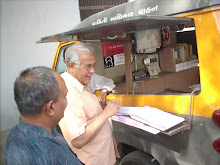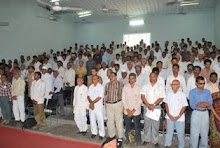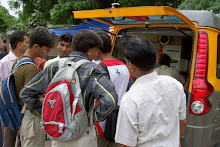The New Indian Express: Kochi:
Sunday, March 23, 2014.
Malaysia Airlines
flight disappearance is a terrible human tragedy,” says ex-naval pilot Samir
Kohli. “But for an aircraft as reliable as the Boeing 777 and equipped with so
much technology, it is surprising.”
Flitting from
country to country, the decorated ex-naval pilot has investigated 12 air
accidents to date. A certified aircraft accident investigator from the
International Civil Aviation Organization in Canada, Kohli offers his expertise
in the field of safety management systems for civil aviation in other countries.
At present, he is aviation adviser to Agip Ecuador Oil company in Ecuador.
“There are very few investigators in India, none on the civil side. You can
find a few in the Indian Air Force. The Indian civil aviation industry
controlled by politicians does not have a job for me as they don’t understand
the need for an investigator,” he says.
Elaborating
on the missing MH370’s capabilities, Kohli says, “The aircraft was equipped
with an ACRS system that sends automated technical messages to the ground station.
But it did not transmit any alerts. So there was no technical failure.”
The theory of
bombing or a sudden disintegration comes next, says the ace investigator. “We
have two precedents to such an attack, the Air India Flight 182 (1985) and the
Pan Am Flight 103 (1988). When an aircraft is bombed, there will always be
wreckage. Complete disintegration without a trace is highly unlikely. There is
also no evidence of an explosion as confirmed by replay of satellite
recordings. ”
Based on the
evidence available, the closest parallel to this incident is the Air France 447
mishap, he says. “The aircraft stalled and fell from a similar altitude and hit
the ocean. It broke up on impact and left debris and bodies floating. They were
recovered five days later. Of course, it took over two years to find rest of
the wreckage and another year to recover the Black Box and CVR.”
Troubled by
comments in international press about pilot suicide, Kohli says, “Pilots are
trained to aviate, navigate and communicate…in this sequence. So, if the pilots
were dealing with an emergency, their first priority would be to keep the plane
flying and under control, in short aviate. Once they had the plane under
control, they would focus on navigation. Only then would they think about communicating.
So the question is did they lose total electrical power that knocked out their
communication systems? Highly unlikely given the back-ups built into the 777
design, but this is theoretically possible. Or, were they hijacked and forced
to turn off the transponder? Nothing can be confirmed or ruled out.”
In 2012,
Kohli was hired as an independent investigator by the 812 Foundation formed by
families of victims of Air India Express Flight IX 812 from Dubai to Mangalore
that crashed while landing on 22 May, 2010, killing 158 passengers and crew
members (out of the 166 on board). The official inquiry had churned a standard
‘pilot error’ verdict. “I found the government had suppressed facts and focused
on the pilot’s errors. A pilot can’t be held responsible for the entire team.”
Kohli faced
many obstacles as he tried to study the situation in detail and obtain all the
records and statements by filing more than 30 RTI petitions in Delhi and
Mangalore. “It took me almost one year to get all the facts from the evasive
authorities,” he says. “I found the reason for the crash was that the Mangalore
Airport was built in a non-standard methodology with the existence of a
concrete structure that was non-frangible and just 200 metres from the runaway.
The entire wing of the plane was sheared off on collision with this structure
that lead to the explosion.”
“The
post-mortem report of the victims showed that only six out of 158 had fatal
injuries while the rest had died of fire burns. My investigation revealed gross
negligence at every level of the government machinery including the managements
of the DGCA, AAI, Air India and Mangalore Airport. Based on my report, the
families have now filed a petition in the Supreme Court,” he says.
Kohli has 30
years of flying experience with 21 years in Indian Navy and nine years in civil
aviation. He has commandeered multi-aircraft squadrons based in the eastern
coast, participated in IPKF operations, tsunami rescue operations in Nicobar
Islands, winning many laurels for his daredevil exploits.
He received
the Nausena Medal for gallantry in 1988, Commendation for Chief of Naval Staff
(2006), the Chief of Air Staff Trophy for best in Air Traffic Management
training and a host of other awards.














































































